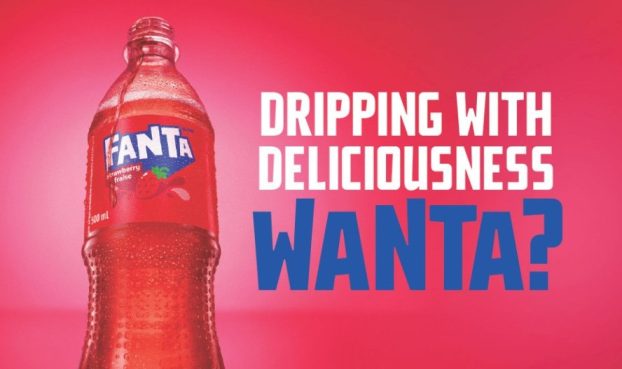Following up on ethnographic research done in 1994 for Kraft Canada by cultural anthropologist Grant McCracken, the strategic planning team at J. Walter Thompson, Toronto, set out to discover just what made Kraft Dinner click with consumers.
Basing research methods on the tried-and-true approach of developing a personality profile for the brand, the JWT team decided in 1997 to take the process one step further and focus exclusively on the emotional aura around the brand.
At the time, as is the case today, Kraft Dinner was the country’s number-one selling grocery SKU with a 75% share in its category and Kraft’s biggest volume business. But sales were flat and had been for some time.
‘It was very important to communicate with people again about what it is that they love about Kraft Dinner,’ says Sarah Moran, VP, director of strategic planning at JWT. ‘Not communicating about that was causing this erosion in confidence in the brand.’
To discover just what was ailing this powerhouse brand, the decision was made to take a unique approach and put the brand on the psychologist’s couch.
In doing so, Kraft discovered some unexpected results including that while seeing the brand as comfortable and friendly, consumers also felt the brand was old, and suffered from low self-esteem.
The resulting campaign, launched in 1999, not only re-established the brand in the minds of its base consumers, but also ‘significantly increased the percentage of base brand sales’ over the last two years, Moran says.
Of course creating personality profiles is not unique. The notion of a brand carrying human traits is nearly as old as advertising. But few agencies had taken the process as far, particularly in terms of developing consumer-driven psychological profiles.
Until recently, in fact, the only broad-based example of such depth of research was Young and Rubicam’s international Brand Asset Valuator (BAV).
Lately however, the emphasis on such psychiatric profiling has been gaining momentum.
‘It’s intuitively smart to do things like look into the area of psychology but I find that in general advertisers and marketers, whether from habits or pride or ego, tend to think that [they] must have all the answers,’ says Arthur Fleischmann, president and CEO of Toronto agency John Street.
‘There are probably a lot of companies saying they do that. My experience is there aren’t a ton that really do it or do it well.’
In January, Toronto-based research firm Millward Brown began employing a psychological profile in its Brand Dynamics research. Internationally, the research arm of the WPP network of agencies has begun developing profiles of thousands of brands worldwide.
Bill Ratcliffe, president of Millward Brown Canada says it is quite common for agency executives to speak about developing personalities for brands. But ‘typically this takes the form of identifying some human characteristics, some attributes that they use to help position the brand.
‘In other words, personality is in that sense seen as a subset of positioning.’
What Millward Brown endeavored to do was to formalize the criteria and allow for the comparison across brands, categories and countries.
Ratcliffe says that what separates MB’s approach from the standard is – like the KD study – a ‘focus on core human personality measures’ as opposed to the kind of descriptors that agencies might try to project onto a brand.
But this, he says, can backfire because just as with a person, a brand trying to come across as genuine and positive could inadvertently turn people off. ‘If they’re friendly, you might describe them as outgoing, but you might describe them as pushy as well or insecure.’
In a nutshell what the firm did was develop six personality traits against which it assesses brands to formulate comprehensive psychological profiles. These traits include extroversion, sensitivity, playfulness, stability, intellectualism and conscientiousness.
A case study for amazon.com completed by MB in the U.S. discovered that the brand was very outgoing, while leaning slightly toward firm, sensible, spontaneous and clever and was considered relatively thorough.
Ratcliffe points out that Microsoft’s public struggles have more to do with its personality – the way it behaves in the marketplace – than with its products.
‘A few years ago, it was IBM. They were arrogant. That’s how people perceived it. People didn’t want to deal with them because of the personality of the brand and how it came across. It had nothing to do with the feature benefits of the products and services they had.’
While research is being conducted on brands in Canada, including one recently completed on President’s Choice – which is reported to have quite a rosy disposition – no actual results are available.
The same is true for the BAV study, which Y&R has been using for 10 years. Few clients, it seems, want to let it be known that they are involved in such a process, perhaps for the same reason TV’s Tony Soprano is hesitant to go public about his visits to the shrink: It’s difficult to hold power if you are seen as mentally weak.
Like the MB study, Y&R’s BAV breaks the brand’s psyche into categories. In this case it’s called the ‘Big 5 Personality Factors’: extroversion, agreeableness, conscientiousness, emotional stability and open-mindedness.
Mary Mills, senior vice-president, director of strategic planning with Toronto-based Y&R, says such studies are useful in interpreting what a brand stands for in the public’s mind. ‘People have a relationship with it. That’s how they want to see it,’ she says.
‘When you go wrong, you go wrong on personality. You rarely go wrong on humour or storytelling or talking about things that it does. Where people really get annoyed and say, ‘This isn’t working or ‘It’s not the brand I know,’ is because you’ve stepped out of character.’
In the case of Kraft Dinner, that was part of the lesson learned from its late 1990s research. In the middle part of the decade, much of the brand’s communications efforts were aimed at kids’ promotions and the launch of new products.
But thanks to the McCracken ethnographic research and JWT’s own profiling efforts, Kraft developed a notion that KD had a ‘lifecycle.’
‘As a consumer, you eat it when you’re young, you help mom make it; as a teen it’s part of your independence; when you move out, it actually starts to represent the comforts and security of home. Then you become a mom and make it and the cycle begins again,’ says Sarah Moran.
‘Although the functional values may change for you, the emotional connections of closeness to the brand, the warmth and security, actually stay put.’
Consumers expected a certain type of communication that they weren’t getting. So Kraft gave them what they wanted.
The first spot broke in 1999. Called ‘Laundry Night,’ the commercial featured a group of university-aged guys using a washing machine to prepare KD. Other installments, also targeting twentysomething consumers, included ‘Romantic Dinner’ featuring a young couple having KD together and ‘Gold Fish Bowl,’ a 1950s sitcom-style animated spot featuring the home-life of a fish family.
Rediscovering consumers’ emotional ties to the brand was central to developing a communication strategy that has lead directly to a spike in sales.
Moran says that she often hears advertisers address the importance of such research, but rarely do they commit to applying it.
To her mind, that’s a mistake.
‘It’s the single most important differentiator, particularly in maturing markets,’ she says. ‘We have a significant amount of data to show it’s the emotional quotient that truly separates Olympic brands from classics or defender brands.
‘That emotional quotient traces directly to personality.’























